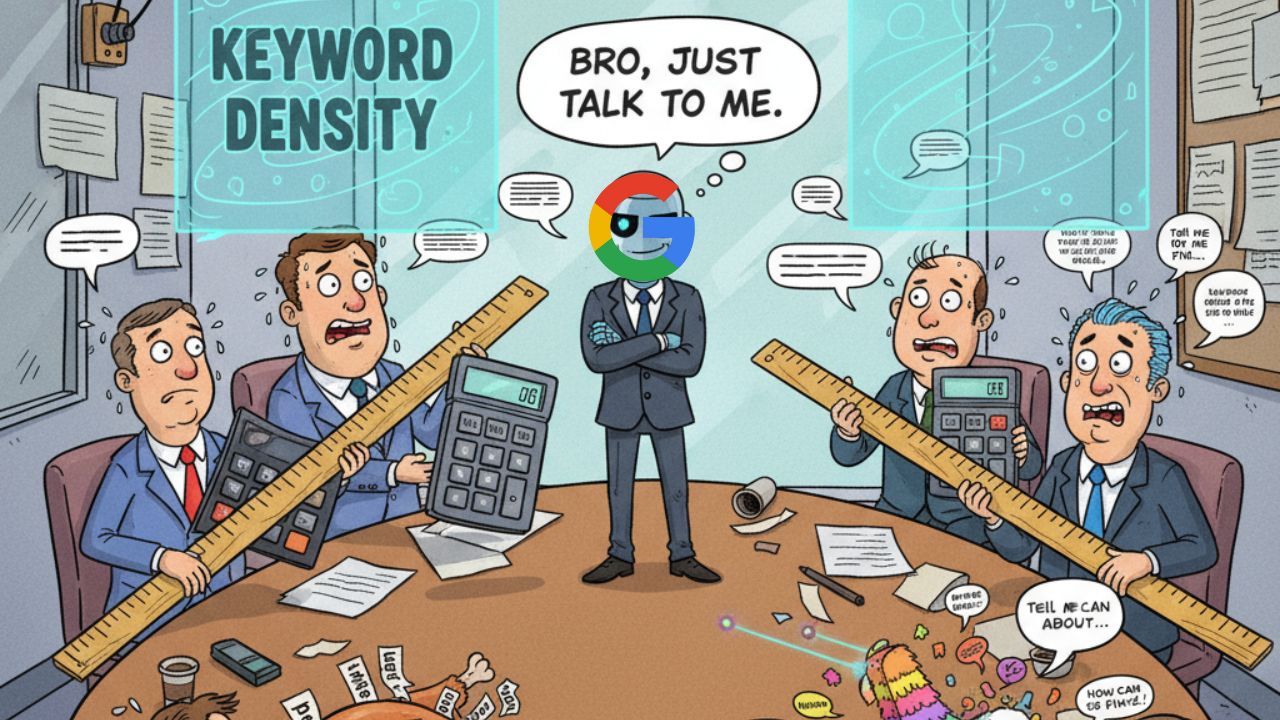
Everyone thought keywords were forever. Marketers built entire empires around keyword density calculators, SEO audits, and “exact match” strategies. But here’s the bombshell—Google just flipped the table. After 25 years of making billions on keyword-driven ads, Google is killing its golden goose. And no one is ready.
Keywords Are Dead—Conversations Are the New Search
Picture the old search experience: someone types best running shoes and a flood of blue links appears. Simple, predictable, keyword-based.
Now imagine this: “I’m training for my first marathon, I over-pronate, and I need shoes under $300. What’s best for me?”
That’s not a keyword query—it’s a conversation. It carries intent, budget, lifestyle context, even urgency. Google’s new AI mode is built to understand conversations, not just keywords.
For businesses, this means one thing: keyword stuffing, density tracking, and obsessing over placement are not just outdated—they’re dangerous.
Why This Is the Biggest Shift in 25 Years
For a quarter of a century, Google’s cash machine ran on one model: sponsored keyword ads. You typed, you clicked, Google got paid. In 2024 alone, that generated over $200 billion.
But ChatGPT, Claude, and other conversational AIs changed user behavior. People now expect a dialogue, not a directory. Google had two choices: fight it or own it. They chose ownership, even if it means cannibalizing their core business.
Now ads won’t just appear next to keywords. They’ll surface inside conversations, triggered by context, behavior, and signals far beyond typed words.
Keyword Clustering Was Just the Beginning
Not long ago, SEOs started shifting from single keywords to keyword clusters—grouping related terms to cover topics more holistically. That was progress.
But clustering is still keyword-centric. Google’s AI doesn’t care about clusters; it cares about conversational relevance. If your brand isn’t visible in those dialogues, you don’t exist.
Brand Is the New SEO
Here’s the kicker: Google’s AI is building brand profiles. It scans your website, your product descriptions, your social media, even your customer reviews.
Messy website? Outdated product feed? Inconsistent social media? Congratulations—you just trained Google’s AI to ignore you.
Strong, consistent branding across every channel? That’s the new ranking factor. Your brand is now your targeting strategy.
Forget Keyword Density. Feed the AI.
Marketers used to obsess: is 1% density enough? Is 3% too much? Google’s own engineers told us years ago to stop.
Now, density is not only irrelevant—it’s counterproductive. Instead, think feed hygiene: are your product descriptions conversational? Do your testimonials answer real-world questions? Does your blog anticipate long-form, natural queries?
Because here’s the truth: your Google Ads account isn’t just an ad platform anymore. It’s an AI training system. Every signal you feed it compounds over time, teaching Google who your best customers are. Garbage in, garbage out.
Winners vs. Losers in the AI Era
Losers: Businesses clinging to old-school SEO tricks, micromanaging keywords, and ignoring their brand presence.
Winners: Brands that treat AI like a partner, feeding it rich, conversational, brand-consistent content across every channel.
Google’s AI mode already has 100 million users. By Q4 2025, ads will be fully integrated. Early movers will lock in compound advantages. Late adopters may never catch up.
The Million-Dollar Question
Will people still click ads inside conversations? Maybe less. But here’s the twist: the clicks that do happen will come from users who’ve spent minutes clarifying their needs with AI. That means fewer clicks, higher conversions.
In other words, businesses won’t just fight for traffic. They’ll fight for trust inside the conversation.
Final Takeaway
Keywords are dead. Conversations are alive. Branding is everything.
If your digital strategy still revolves around density checkers and keyword clusters, you’re building on sand. The future belongs to brands that feed AI the right data, tell consistent stories, and show up in conversations as trusted authorities.
Because in this new landscape, Google isn’t just the middleman anymore—it’s the conversation itself. And if you’re not in the conversation, you’re invisible.
SEO Tips
If you found this article helpful, please share it so others can benefit too. Be sure to keep an eye out for more upcoming posts packed with powerful SEO tips and strategies. In the meantime, feel free to explore our other articles to deepen your knowledge and stay ahead of the curve: How to Rank Local Businesses in 2 Weeks Without Hacking Google






